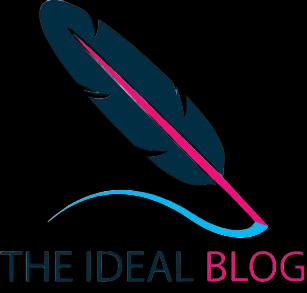lifestyle
Cultivating Integrity: A Guide to Work Culture and Ethics

In today’s fast-paced and ever-evolving business world, the significance of work culture and ethics cannot be overstated. Companies that prioritize ethical behaviour and a positive work culture tend to enjoy higher employee morale, increased productivity, and sustained long-term success. This article explores the interplay between work culture and ethics, shedding light on the importance of cultivating a virtuous and principled workplace environment.
The Nexus of Work Culture and Ethics
Work culture and ethics are inextricably linked. The organizational culture defines the values, beliefs, and behaviours’ that govern how employees interact with one another, with clients, and with the company itself. When ethics are embedded in this culture, it establishes a framework for employees to make ethical decisions, even in challenging situations.
Key Elements of an Ethical Work Culture
- Transparency: Open and honest communication is fundamental to an ethical work culture. Employees should feel comfortable discussing concerns, raising issues, and seeking clarification, without fear of retribution.
- Accountability: An ethical workplace holds individuals accountable for their actions and decisions. This means taking responsibility for both successes and failures and learning from them.
- Respect: A culture of respect ensures that everyone is treated with dignity and fairness. This extends to diversity and inclusion, where different perspectives and backgrounds are valued.
- Integrity: The foundation of an ethical work culture is integrity. This involves consistently adhering to the organization’s values, acting honestly, and upholding ethical standards, even when no one is watching.
The Benefits of an Ethical Work Culture
Creating a workplace where ethics are deeply ingrained offers several benefits, including:
- Enhanced Employee Satisfaction: Employees are more likely to enjoy their work and remain loyal to a company that upholds ethical principles.
- Improved Decision-Making: Ethical guidelines provide a framework for making difficult choices, reducing the likelihood of unethical behaviour.
- Greater Customer Trust: A company that demonstrates ethical behaviour builds trust with its customers, leading to long-term relationships.
- Attracting Top Talent: Ethical companies often attract high-calibre employees who share the same values.
- Sustainability: Ethical behaviour is closely linked to long-term business sustainability, as it minimizes the risk of reputation damage and legal issues.
Challenges in Maintaining an Ethical Work Culture
Maintaining an ethical work culture is not without its challenges. The fast-paced, competitive nature of business can sometimes create temptations to cut corners or compromise on ethical principles. Organizations must remain vigilant and proactive in addressing these challenges, as well as responding to ethical breaches when they occur.
Conclusion
Work culture and ethics are not mere buzzwords but the foundation of any successful and sustainable organization. Companies that prioritize ethical behaviour, transparency, and integrity within their organizational culture tend to outperform their peers in the long run. Building and nurturing a culture of ethics requires commitment from leadership, continuous communication, and a dedication to upholding the company’s core values.
In a world where trust and reputation are paramount, creating a culture of ethics within the workplace is not only the right thing to do; it’s a strategic imperative that can propel a company to new heights of success. By embracing this holistic approach to work culture and ethics, organizations can build a stronger, more resilient future for both their employees and their bottom line.
fashion
Culture Clothing Brand: Celebrating Diversity in Fashion

In a world that thrives on diversity and individuality, culture clothing brands have emerged as powerful catalysts for change in the fashion industry. These brands go beyond mere aesthetics, delving into the rich tapestry of Culture Clothing Brand influences to create unique, meaningful pieces that tell stories and challenge conventional norms. Let’s embark on a journey exploring the fascinating realm of culture clothing brands.
A. Definition of Culture Clothing Brand
Culture clothing brands are entities that draw inspiration from diverse cultural elements, incorporating them into their designs and philosophies. These brands celebrate the richness of various traditions, providing a platform for cultural representation in the ever-evolving world of fashion.
B. Importance of Cultural Representation in Fashion
In an era where inclusivity is paramount, the representation of diverse cultures in fashion is not just a trend but a necessity. Culture clothing brands play a pivotal role in breaking down stereotypes and fostering a sense of unity through clothing.
II. Evolution of Culture Clothing Brand
A. Historical Background of Culture Clothing Brand
The roots of culture clothing brands can be traced back to historical periods where clothing was a reflection of identity and societal roles. Today, these brands have evolved, adapting to modern sensibilities while retaining the essence of cultural significance.
B. Emergence in Modern Fashion
As the world becomes more interconnected, culturally specific clothing labels have become increasingly desirable to consumers. As a result, designers are producing a veritable melting pot of designs that appeal to people all over the world.
III. Characteristics of Culture Clothing Brand
A. Unique Design Elements
One distinguishing feature of culture clothing brands is their incorporation of unique design elements. These can range from traditional patterns and symbols to innovative blends of cultural aesthetics, creating visually stunning and distinctive garments.
B. Storytelling through Fashion
Culture clothing goes beyond mere fabric; it tells stories. Each piece becomes a canvas narrating tales of heritage, struggles, and triumphs. This narrative-driven approach adds depth and meaning to the garments, resonating with consumers on a personal level.
C. Cultural Influences in Materials
From the choice of fabrics to the color palettes, culture clothing brands pay meticulous attention to the cultural influences in their materials. This not only ensures authenticity but also promotes sustainable practices by utilizing traditional and eco-friendly materials.
IV. Impact on Fashion Industry
A. Breaking Stereotypes of Culture Clothing Brand
Culture clothing brands challenge stereotypical representations in the fashion industry. By embracing cultural diversity, these brands redefine beauty standards and broaden the scope of what is considered fashionable.
B. Promoting Diversity and Inclusion
The impact of culture clothing brands extends beyond the runway. By promoting diversity and inclusion, these brands contribute to a more equitable and representative fashion landscape, fostering a sense of belonging among consumers.
V. Popular Culture Clothing Brand
A. Case Studies of Successful Brands
Examining successful culture clothing brands provides valuable insights into their strategies and approaches. Brands like [Brand Name], [Brand Name], and [Brand Name] have achieved widespread acclaim for their unique fusion of cultural influences with contemporary fashion.
B. Their Unique Approaches
Each successful culture clothing brand has a unique approach to celebrating diversity. Whether it’s through collaborations with artisans, sustainable practices, or innovative marketing, these brands set the standard for cultural representation in fashion.
VI. Challenges Faced by Culture Clothing Brand
A. Appropriation Concerns
One of the challenges culture clothing brands grapple with is the risk of cultural appropriation. Striking a balance between appreciation and appropriation requires a nuanced understanding of cultural contexts and a commitment to respectful representation.
B. Balancing Tradition and Innovation
Culture clothing brands face the delicate task of balancing tradition and innovation. While honoring cultural roots, these brands must also navigate the demands of a dynamic fashion industry, ensuring their designs remain relevant and appealing.
VII. Navigating the Market
A. Identifying Target Audiences
Successful culture clothing brands understand their target audiences. Identifying and catering to specific demographics ensure that the brand resonates with consumers who appreciate and connect with the cultural narratives woven into the fabric of each garment.
B. Strategies for Market Penetration
Strategic market penetration involves a combination of online and offline strategies. Utilizing e-commerce platforms, social media, and collaborations with influencers are effective ways for culture clothing brands to reach a broader audience.
VIII. Future Trends in Culture Clothing Brand
A. Sustainable Practices
As sustainability gains prominence in the fashion industry, culture clothing brands are increasingly incorporating eco-friendly practices. From using organic materials to promoting ethical production, sustainability is becoming a key trend in cultural fashion.
B. Technological Integration
The integration of technology offers new avenues for culture clothing brands. From augmented reality-enhanced shopping experiences to blockchain-based transparency in the supply chain, technology is reshaping how consumers interact with and perceive cultural fashion.
IX. How to Support Culture Clothing Brand
A. Conscious Consumerism
Supporting culture clothing brands begins with conscious consumerism. By actively seeking out and purchasing from these brands, consumers contribute to the preservation and promotion of diverse cultural expressions in fashion.
Conclusion
A. Recap of the Cultural Impact
Culture clothing businesses have had an everlasting effect on the fashion industry, altering beauty standards, and encouraging diversity. They have revolutionized the way we think about and interact with fashion with their special combination of old and new.
B. Encouraging Support for Diversity in Fashion
As consumers, industry players, and enthusiasts, it is our collective responsibility to encourage and support diversity in fashion. By embracing culture clothing brands, we contribute to a more inclusive and vibrant fashion ecosystem
FAQs
A. What makes a clothing brand culturally significant?
Culturally significant clothing brands go beyond aesthetics, incorporating unique design elements and narratives that celebrate and respect diverse cultures.
B. How can consumers distinguish between authentic and appropriative designs?
Distinguishing between authentic and appropriative designs involves researching the brand’s approach to cultural representation, seeking transparency in their production processes, and respecting cultural contexts.
C. Are there any specific cultures dominating the culture clothing market?
The culture clothing market is diverse, with brands drawing inspiration from various cultures worldwide, preventing the dominance of any specific cultural influence.
D. How can aspiring designers contribute responsibly to cultural representation?
Aspiring designers can contribute responsibly by researching, respecting, and collaborating with communities, avoiding cultural appropriation, and promoting accurate cultural narratives.
E. What role does social media play in promoting culture clothing brands?
Social media serves as a powerful tool for culture clothing brands to showcase their designs, share cultural narratives, and engage with a global audience, contributing to their success.
health
Balancing Health and Lifestyle: A Holistic Approach to Well-being

In today’s fast-paced world, the pursuit of health and wellness has become a fundamental aspect of our lives. We constantly seek ways to optimize our physical, mental, and emotional well-being in health and lifestyle. . While diet and exercise are often at the forefront of the health discussion, it’s essential to understand that true well-being encompasses much more than just these two factors. Health and lifestyle are intricately connected, and taking a holistic approach is crucial for a balanced and fulfilling life.
1. The Pillars of Holistic Health
Holistic Health and Lifestyle considers all aspects of our lives, recognizing that physical health, mental well-being, and emotional balance are intertwined. The pillars of holistic health include:
a. Physical Health: A well-rounded fitness routine, a balanced diet, adequate sleep, and regular medical check-ups are the foundation of physical well-being. These elements provide the energy and vitality necessary for daily life in Health and Lifestyle.
b. Mental Well-being: Mental health is as crucial as physical health. Reducing stress, practicing mindfulness, and seeking help when needed are vital to maintaining mental equilibrium in health and lifestyle.
c. Emotional Balance: Our emotions play a significant role in overall health. Nurturing positive relationships, managing negative emotions, and finding healthy outlets for stress are integral to emotional well-being.
d. Social Connection: A strong social support system can enhance well-being. Positive relationships provide emotional support, reducing feelings of isolation and loneliness.
e. Personal Growth: Constant learning and personal development are key aspects of a holistic lifestyle. They keep the mind engaged and provide a sense of purpose.
2. The Role of Lifestyle Choices Health And Lifestyle
Our daily choices significantly impact our overall Health and Lifestyle and well-being. Lifestyle choices encompass a wide range of behaviours, Health and Lifestyle including:
a. Diet: Eating a balanced diet with plenty of fruits, vegetables, lean protein, and whole grains is crucial for physical health. Avoiding excessive processed foods, sugar, and unhealthy fats is equally important.
b. Exercise: Regular physical activity not only contributes to physical fitness but also boosts mental and emotional well-being. It can reduce stress, improve mood, and increase energy levels.
c. Sleep: Quality sleep is essential for mental clarity, emotional stability, and physical recovery. Aim for 7-9 hours of uninterrupted sleep per night.
d. Stress Management: Chronic stress can have a severe impact on overall health. Practicing stress management techniques such as yoga, meditation, or deep breathing can help maintain emotional balance.
e. Avoiding Harmful Habits: Smoking, excessive alcohol consumption, and substance abuse can have detrimental effects on both physical and mental health. Quitting or reducing these habits is essential for a Health and Lifestyle
f. Time Management: Balancing work, family, and personal time is vital for well-being. Overworking can lead to burnout and stress, while neglecting personal time can lead to feelings of emptiness.
3. Finding Balance In Health And Lifestyle
Balancing Health and Lifestyle requires a proactive and mindful approach. Recognize that there will be times when one aspect of your life might take precedence over the others. However, strive for an overall equilibrium. It’s essential to listen to your body and mind, and adjust your routine when necessary.
Moreover, seeking professional guidance and support can be invaluable in maintaining a holistic approach to health and lifestyle. Consider consulting with healthcare providers, therapists, or coaches who can offer personalized advice and assistance.
In conclusion, health and lifestyle are inextricably linked. To achieve true well-being, one must embrace a holistic approach that takes into account physical health, mental well-being, emotional balance, social connections, and personal growth. By making conscious choices that prioritize these aspects, we can lead fulfilling lives marked by vitality, resilience, and contentment. Remember, it’s not about perfection but about progress and finding a balanced path that suits your individual needs and aspirations.
-

 fashion8 months ago
fashion8 months agoCulture Clothing Brand: Celebrating Diversity in Fashion
-

 travel8 months ago
travel8 months agoAudi Care: Worth It?
-

 sports9 months ago
sports9 months agoTD Sports: Transforming the Sporting Landscape
-

 business9 months ago
business9 months agoMastering the Art of Entrepreneurship: From Vision to Success
-

 fashion8 months ago
fashion8 months agoRoyal Cosmetics: Unveiling the Secrets of Timeless Beauty
-

 health9 months ago
health9 months agoBalancing Health and Lifestyle: A Holistic Approach to Well-being
-

 fashion9 months ago
fashion9 months agoOld Fashion Gift Set: A Nostalgic Journey in a Box
-

 sports8 months ago
sports8 months agoSports Reporter: Unveiling the Heartbeat of the Game

